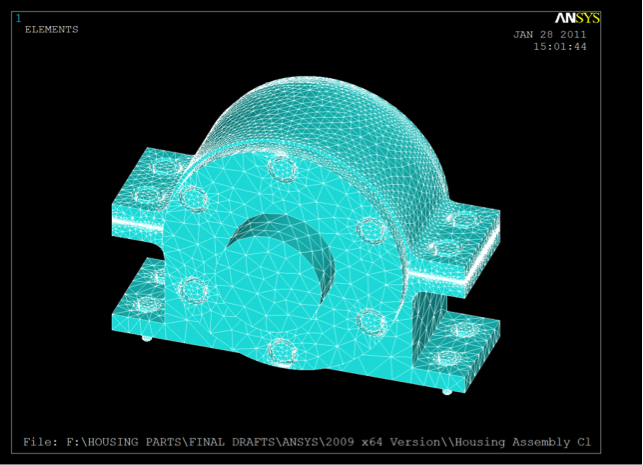www.acsprf.org
Reports: DNI950554-DNI9: Gas Expanded Lubricants - Improving Energy Efficiency Using 'Smart' Fluids
Andres F. Clarens, PhD , University of Virginia
Building
the foundation of the chemical understanding necessary to selecting the proper
components and operating conditions is critical to delivering this technology
to the power generation industry. In order to develop this understanding, the
focus of this work is guided by two primary research objectives: (1) Characterize
the relationship between GEL composition and bulk properties and (2) Establish
the influence of GELs on gear behavior. In order to fulfill these objectives, two
principal research tasks have been defined. During the first year of the project period, significant progress has been
made in the development of both of these tasks, outlined below.
The work in this task is
focused on measuring three important chemical properties of binary CO2/lubricant
mixtures: 1) the diffusion of CO2 into the lubricant 2) the
oxidative stability of the mixtures and 3) the rheology of these mixtures under
elevated temperatures and pressures. The diffusivity is being measured using
custom built pressure vessels in which liquid and gas phase mixtures are
combined and the pressure is measured for 20-hours. The experiments are
performed in a temperature-controlled bath to minimize temperature fluctuation.
The pressure history is then fit to an analytical expression using a non-linear
regression tool to calculate constants for rate of change and equilibrium
pressure. Results indicate greater diffusivity of CO2 into the
lubricants with lower viscosities. A similar type of experimental setup is
being used to measure oxidative stability. A pressure vessel is fitted with a
two-way valve immediately above the CO2 intake to allow for
pressurization, isolation, and subsequent disconnection from the syringe pump
used to pressurize the vessels. For our purposes, oxidative degradation of
lubricant has its most important impact on the viscosity of the lubricants. After
allowing the mixtures to sit for 1-4 weeks at elevated temperatures, the lubricant
is degassed and the viscosity of the lubricant is measured. Oxidation of synthetic
lubricants generally results in decreased molecular weight and consequently
viscosity. The
viscosity of GELs under a variety of conditions is being characterized under
pressure using an Anton Paar MCR 301 rheometer equipped with a high-pressure
measuring cell rated up to 15 MPa. Figure 1 demonstrates the relationship
between the mass fraction of CO2 in the mixture and the viscosity.
The data shows a good fit with Equation 1. Mass fraction values were obtained
by extrapolating pressure-mass fraction data from previously published work. As
predicted, the viscosity of the GEL decreases logarithmically with increasing
mass fraction of CO2 according to equation 1: The
viscosity-composition data being generated here will form the cornerstone of
the controllers that will be developed to regulate the composition of the GELs
being delivered to the bearing. Figure 1. Viscosity of PAG-CO2
mixtures as a function of mixture composition at 40°C and 100°C. The results were
obtained experimentally while the predicted value is obtained using a
theoretical equation. The modeled values were used to develop modeling
estimates of power loss reductions in tilting pad journal bearings. Task 2. Develop an experimental testbed to measure
bearing performance using GELs A
major focus of the first year of the project has been to design the mechanical
test rig to be used to measure the performance of GELs in tilting pad bearings.
The test rig will utilize a 10 hp motor capable of reaching 10,000 rpm to drive
a 1.5" rotor of approximately 42" in length. This rotor will be supported by
two tilting-pad journal bearings supplied by Lufkin-RMT, Inc., who will also
finalize all designs for the test rig and manufacture the individual
components. This task was particularly challenging because custom bearing
housings had to be designed to ensure that they would be capable of reaching
pressures of up to 17 MPa. A finite element analysis was used to optimize key
design parameters such as material selection and thickness, number and size of
bolts, and accommodations for seals, instrumentation, and lubricant inlets and
outlets. Figure 2 presents a rendering of the finite element model of the final
housing design. The
design of the oil seals was especially challenging because of the pressures and
speeds being used in this system. To meet these difficult conditions we maximized
the face area exposed to the pressure and utilizing a Teflon-coated steel
o-ring to allow the oil seal to form a tight seal without becoming overly rigid
and acting as a bearing, which would introduce forces that could cause the test
rig to become unstable. The final step in designing the GEL testbed was to
develop a GEL delivery system. That system has been designed and the
construction of the unit has been contracted out. All elements of the this test
rig are now in production and we expect the rig to be built by end of 2011. Figure 2. Finite element model used to
analyze the effects of high pressure on a bearing housing design.


